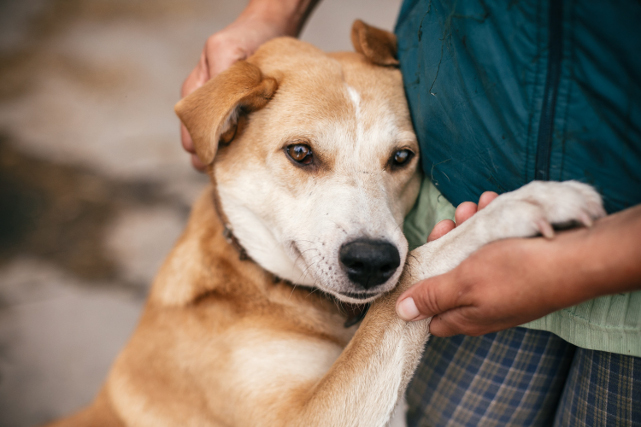There are fewer words a pet owner wants to hear less than “your pet has fleas”. Fleas are pesky parasites, and in addition to being a major annoyance for us humans, they can cause serious problems for the unlucky animal playing host.
Thankfully, flea treatment and prevention has come a long way, and now, with the right measures, these irritating creatures can be mitigated fairly easily. Addressing fleas before they become a problem will not only save you time, money, and hassle later on, but it will ensure your pet’s safety and comfort at the same time. Here are some proactive flea prevention tips for your pets.
How to Identify a Flea and Causes of Infestation
Most of us are aware of fleas and understand what they do, but do you know what a flea infestation looks like? Fleas are small, wingless insects that survive by feeding off of the blood of larger animals. They are reddish-brown in colour, usually just a couple of millimetres long, and can exist almost anywhere in the world. They don’t fly, and instead get around by jumping (relatively) massive distances. They survive by feeding off the blood of mammals, and sometimes birds.
It’s possible for a home to become infested with fleas year-round – in Vancouver and the Fraser Valley, fleas are around all year. Typically, fleas enter the home with other animals. Since dogs tend to spend more time outside, they are at a greater risk of contracting fleas, but outdoor cats can provide an unwitting ride for the tiny insects as well. Additionally, fleas can enter the home with people, visiting animals, or in some cases, on the backs of unwanted animals, such as mice and rats.
There are a number of issues that can be caused by a flea infestation in your pet:
- Fleas can cause a lot of discomfort in your pet from all the bites
- Your pet will likely scratch and bite at their skin repeatedly to try and get some relief, leading to irritated skin and other wounds.
- Additionally, fleas can carry tapeworms, which can be passed onto your pet as well.
- Some animals are allergic to flea bites, which can be very serious if left untreated.
- Additionally, constant scratching can lead to infections, creating an even bigger problem.
Fleas can bite people, but they tend not to actively live on them in the same way they do with other animals. Fleas prefer furry animals, making cats and dogs obvious targets. Once on an animal, a flea will remain there until they are killed or die off naturally. However, they’re also capable of laying eggs in the fur of an animal, which will eventually hatch and start the whole frustrating process over again.
Now that you know a little more about fleas, you’re probably wondering how best to prevent them from becoming a problem with your pet, and by extension, in your home. Thankfully, there are a number of steps you can take to be proactive about flea prevention, addressing the problem before it’s too late.
Watch for the Signs of a Flea Infestation
One of the best ways to ensure your pet is flea-free is simply to keep an eye on their behaviour and take note of anything unusual. Pets that have fleas on them will be very uncomfortable, so it should be fairly easy to tell if there’s an infestation in progress. Here are some things to look for when watching for fleas in your pet:
- Excessive scratching, chewing, licking, and grooming
- Red, irritated skin, especially on the neck, belly, and hindquarters
- Dark brown ‘flea dirt,’ which is the flea’s excrement, present in your pet’s fur
If you notice any of these signs, confirm your suspicions by brushing through your pet’s fur with a fine-tooth comb. You may spot some moving spots, which are fleas, but it’s more likely you’ll see more ‘flea dirt.’ You can confirm that this is flea excrement and not regular dirt by brushing it onto a wet piece of paper towel. It will turn red, indicating that this is dried blood sucked from your pet and passed on by the flea.
Check Your Pet Regularly
It’s good to routinely check your pet for fleas. You can purchase a flea comb from your local pet store. Having your pet on a monthly flea product can prevent the hassle of checking—while flea baths can help soothe your pets skin, flea shampoos are not 100% effective. Your veterinarian is the best resource for effective external parasite prevention based on your pet’s lifestyle.
Choose an Appropriate Preventative Flea Medication
For dogs and outdoor cats, your vet may recommend a preventative flea treatment. These can vary widely depending on your pet, but they tend to be a topical solution or oral tablet intended to be taken regularly. Be wary of over-the-counter flea treatments, as these can differ drastically in their effectiveness and safety for your pet. If your vet identifies your pet as being at-risk for fleas, they’ll make the necessary recommendations for preventative treatment.
One very important thing to note is to never use flea medication intended for a cat on a dog, or vice versa. Preventative flea formulas for one animal may actually be toxic for another, so always follow your veterinarian’s advice to the letter.
Keep Your House Clean and Sanitized
A great way to prevent a flea infestation is to keep your home clean.
- There are some chemical products intended to treat an environment for fleas, but be cautious with these, as some can be harmful to the people and/or animals they’re intended to protect.
- Deep clean your carpets, towels, blankets, and other fibrous surfaces. Fleas will sometimes take refuge in all of this, particularly if they come into frequent contact with your pet.
- Vacuum carpets, pet-specific blankets, towels, and pet beds frequently to decrease any fleas or flea eggs hiding out there.
- Always empty your vacuum canister outside and wash it with soap and water afterwards to ensure no hangers-on are reintroduced to your home.
Maintain a good routine of regular hygiene for your pet
It is typically recommended that you treat all your pets every month for fleas, as fleas can lay dormant in your home and in British Columbia they are around all year. This is in addition to their regular bathing and grooming.
Take your pet to see your veterinarian regularly
The best thing you can do to ensure your pet’s health is to simply take them in for their routine vet check-ups. Of course, you do your best to run checks on them and ensure they’re free of any pesky pests, but there’s nothing better than a comprehensive veterinary examination. Your veterinarian can recommend the proper flea and tick medication based on your lifestyle.
Fleas are a common fear for many pet owners, but with proper preventative care, they don’t need to be a huge concern. It’s very important to take the proper precautions to mitigate the risk of fleas and other parasites, and when done right, you’ll sidestep a lot of potential issues down the road. Not only will your home be free of fleas, but your pets will be healthy, comfortable, and happy.
Creative Commons Attribution: Permission is granted to repost this article in its entirety with credit to Hastings Veterinary Hospital and a clickable link back to this page.






